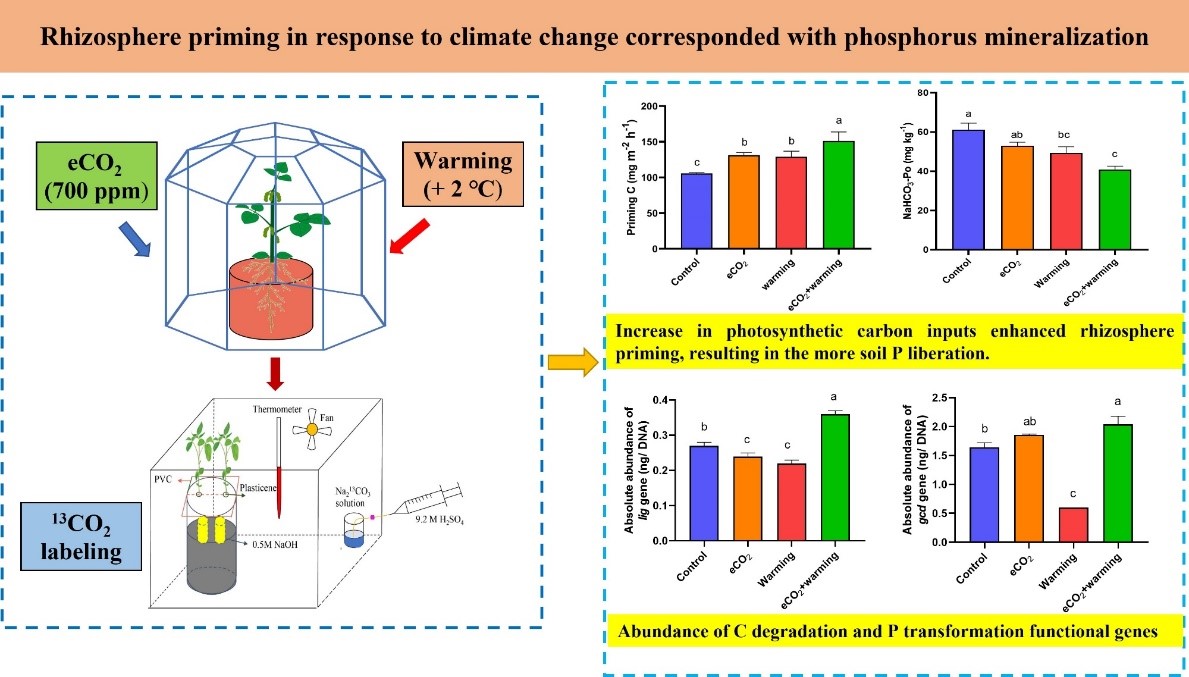Elevated CO2 and temperature likely alter photosynthetic carbon inputs to soils, which may stimulate soil microbial activity to accelerate the decomposition of soil organic carbon (SOC), liberating more phosphorus (P) into the soil solution. However, this hypothesis on the association of SOC decomposition and P transformation in the plant rhizosphere requires robust soil biochemical evidence, which is critical to nutrient management for the mitigation of soil quality against climate change.
Recently, researchers from the Northeast Institute of Geography and Agroecology (IGA) of the Chinese Academy of Sciences investigated the microbial functional genes relevant to P mineralization together with priming processes of SOC in the rhizosphere of soybean grown under climate change.
Related findings were published in Science of the Total Environment.
The researchers found that the eCO2 plus warming treatment increased the primed carbon (C) by 43% but decreased the NaHCO3-extratable organic P by 33% (Figure 1).
NaHCO3-Po was negatively correlated with phosphatase activity and microbial biomass C. Elevated CO2 increased the abundances of C degradation genes, such as abfA and ManB, and P mineralization genes, such as gcd, phoC and phnK.
The results suggested that increased photosynthetic carbon inputs to the rhizosphere of plants under eCO2 plus warming stimulated the microbial population and metabolic functions of both SOC and organic P mineralization. There is a positive relationship between the rhizosphere priming effect and P mineralization. The response of microorganisms to plant-C flow is decisive for coupled C and P cycles, which are likely accelerated under climate change.

Figure 1. Rhizosphere priming in response to climate change corresponded with phosphorous minerlization
Contact:
Jian Jin
Northeast Institute of Geography and Agroecology, CAS
e-mail: jinjian@iga.ac.cn
Attatchment:
Stimulation of primed carbon under climate change corresponds with phosphorus mineralization in the rhizosphere of soybean.
https://doi.org/10.1016/j.scitotenv.2023.165580

